VIVO Pathophysiology
Dental Anatomy of Humans
Humans evolved as omnivores, and our teeth reflect this history. We have relatively pathetic canine teeth compared to cats and even other primates such as baboons. Our premolars and molars and not nearly as efficient as those of ruminants or horses for grinding tough plant material. Nonetheless, our teeth generally serve us well for the kind of diet we consume. |
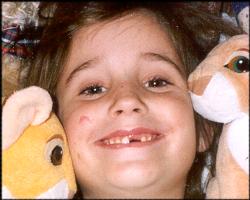 |
|
The third molars of humans are also known as "wisdom teeth". These teeth typically emerge between 17 and 25 years of age, and often crowd other teeth such that they must be pulled. Some people don't have wisdom teeth, which spares them this trauma. If you enjoy arts and crafts, and have your wisdom teeth pulled, a fun project is to create a necklace with the teeth, as shown to the right. In human dental anatomy the canine teeth are refered to as the eyeteeth and the premolars as the bicuspids. Note that in the deciduous formula shown below, humans are described as having molars, unlike domestic animals which are said to have premolars. |  |
| Dental Formulae | |||||
|---|---|---|---|---|---|
| Deciduous | 2 1 0 2 2 1 0 2 |
= 10 | Permanent | 2 1 2 3 2 1 2 3 |
= 16 |
| Tooth Eruption | ||
|---|---|---|
| Deciduous | Permanent | |
| Incisors | 6 - 10 months | 7 - 8 years |
| Canine | 16 - 20 months | 11 years |
| Premolars | 11 - 13 years | |
| Molars | 10 - 24 months | 6 - 25 years |
| Maxillary Arcade | 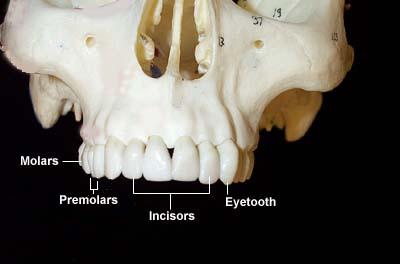 |
| Maxillary Arcade (Lateral view) |
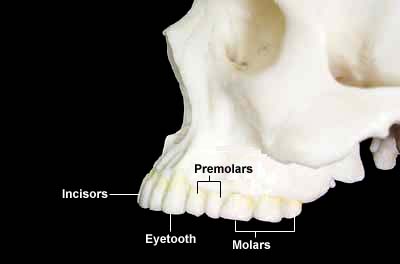 |
| Mandibular Arcade | 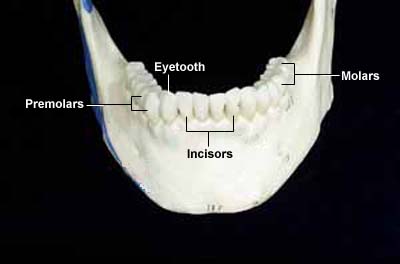 |
| Mandibular Arcade (Lateral view) |
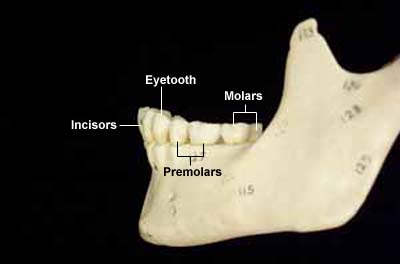 |
Author: Melissa Rouge
Send comments to Richard.Bowen@colostate.edu
